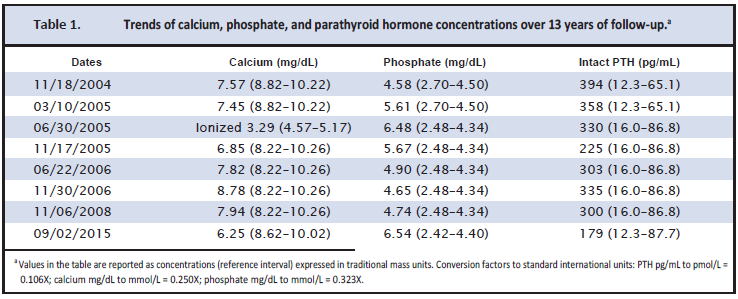Summary
DOI: 10.1373/clinchem.2016.269050
Student Discussion
Student Discussion Document (pdf)
Min Yu,1* David E. Bruns,1 Jerry A. Katzmann,2 Lawrence M. Silverman,1 and David L. Murray2
1Division of Laboratory Medicine, Department of Pathology, University of Virginia, School of Medicine and Health System, Charlottesville, VA; 2Department of Laboratory Medicine and Pathology, Mayo Clinic, Rochester, MN.
*Address correspondence to this author at: Division of Laboratory Medicine, Department of Pathology, University of Virginia School of Medicine and Health System, PO Box 800168, Charlottesville, VA 22908. Fax 434-924-2107;
e-mail [email protected]
Case Description
A 62-year-old Virginia man in good health was found on routine testing to have a decreased platelet count of 124k/μL (reference interval: 150–450k/μL). There was no evidence of bruising or bleeding, and there was no family history of thrombocytopenia. His weight was stable, and he had no complaints of pain and no gastrointestinal, musculoskeletal, or hematological symptoms. He denied fatigue, fevers, chills, and night sweats. Past medical history included hypothyroidism and chronic obstructive pulmonary disease. Physical examination was unremarkable.
Other laboratory test results included hemoglobin of 13.8 g/dL (reference interval: 14.0 –18.0 g/dL) and mean red-cell volume of 98.1 fL (reference interval: 83.0 –95.0 fL). Plasma potassium was 4.1 mmol/L (reference interval: 3.5– 4.5 mmol/L), calcium 8.8 mg/dL (reference interval: 8.8 –10.5 mg/dL), albumin 4.23 g/dL (reference interval: 3.4 –5.0 g/dL), and alkaline phosphatase 61 U/L (reference interval: 40–150 U/L). Review of a peripheral blood smear found no obvious evidence of
pseudothrombocytopenia. Serum ferritin was 53 ng/mL (reference interval: 20–275 ng/mL) and iron saturation was 18% (reference interval: 16%–48%).
Serum protein electrophoresis (Fig. 1A) revealed 2 restricted bands in the γ region, identified by immunofixation (IFE)3 electrophoresis (Fig. 1B) as IgG κ proteins. The combined concentration of these 2 bands was <1.0 g/dL as estimated by densitometry of the stained serum protein electrophoresis gel. IFE (Fig. 1B) also revealed an α-heavy chain band in the α-2 region with no
corresponding light-chain band. Immunoglobulin quantification results were as follows: IgA 107 mg/dL (reference interval: 60–263 mg/dL), IgG 1376 mg/dL (reference interval: 694–1618 mg/dL), and IgM 36 mg/dL (reference interval: 60–263 mg/dL). Serum free κ light chain was 3.01 mg/dL (reference interval: 0.33–1.94 mg/dL), and serum free λ light chain was 1.85 mg/dL (reference
interval: 0.57–2.63 mg/dL). The κ:λ free-lightchain ratio was 1.6 (reference interval: 0.26 –1.65). Urine IFE showed no monoclonal immunoglobulins.

Questions to Consider
- What tests are appropriate to evaluate asymptomatic mild thrombocytopenia?
- What are the expected clinical and laboratory findings in alpha-heavy-chain disease?
- What is the likely explanation of the IFE finding of a free alpha-heavy chain in this patient?
- What other laboratory tests would you perform to characterize the alpha-heavy-chain band found on IFE?
Final Publication and Comments
The final published version with discussion and comments from the experts appears
in the February 2018 issue of Clinical Chemistry, approximately 3-4 weeks after the Student Discussion is posted.
Educational Centers
If you are associated with an educational center and would like to receive the cases and
questions 3-4 weeks in advance of publication, please email [email protected].
AACC is pleased to allow free reproduction and distribution of this Clinical Case
Study for personal or classroom discussion use. When photocopying, please make sure
the DOI and copyright notice appear on each copy.
DOI: 10.1373/clinchem.2016.269050
Copyright © 2018 American Association for Clinical Chemistry